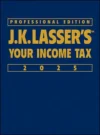Dependent Care Assistance Plan Carryovers
In response to the COVID-19 pandemic, the Consolidated Appropriations Act, 2021 (CAA) and the American Rescue Plan Act (ARPA) made two important changes in dependent care assistance plans (DCAPs) offered by many employers. For the 2021 taxable year, ARPA increased the exclusion limit for dependent care benefits to $10,500, up from the usual limit of $5,000. The CAA provided generous carryover rules to enable employees to use up their benefits without incurring taxable compensation. Now the IRS has clarified the carryover rules (Notice 2021-26).
Overview of carryover rules. Dependent care assistance may be paid by employer contributions or by employee contributions through a cafeteria plan. Prior to the law changes, a DCAP could have a 2½ month grace period (but not a carryover) in which unused amounts from a plan year were used in the following year. The applicable exclusion limit (ie. $5,000 for 2020) applied to the DCAP benefits used during the year plus unused amounts used during the 2½ month grace period. The CAA permits DCAPs to allow carryovers of unused benefits from a plan year ending in 2020 to a plan year ending in 2021, and from a plan year ending in 2021 to a plan year ending in 2022. Alternatively, the DCAP may extend the plan’s claims period for a plan year ending in 2020 or 2021 to 12 months after the end of the plan year.
Carryover example for calendar year plan. An employee elects to contribute $5,000 for DCAP benefits for the 2020 plan year but incurs no dependent care expenses during the plan year. The plan allows the employee to carry over the unused $5,000 of DCAP benefits to the 2021 plan year. The employee elects to contribute $10,500 for DCAP benefits for the 2021 plan year. The employee incurs $15,500 in dependent care expenses in 2021 and is reimbursed $15,500 by the DCAP. The $15,500 is excluded from the employee’s gross income and wages because $10,500 is excluded as 2021 benefits and the remaining $5,000 is attributable to a carryover.
Carryover example for non-calendar year plan. An employee is covered by a plan that has a July 1 to June 30 plan year. For the plan year beginning July 1, 2020, the employee elects to contribute $5,000 for DCAP benefits, but the employee incurs no dependent care expenses during the plan year. The plan allows the employee to carry over the unused $5,000 of DCAP benefits to the plan year beginning July 1, 2021. The employee elects to contribute $10,500 for DCAP benefits for the plan year beginning July 1, 2021. The employee has $15,500 available for dependent care expenses for the plan year beginning July 1, 2021. The employee incurs no dependent care expenses during the period from July 1, 2021, to December 31, 2021, and has $15,500 of DCAP benefits available as of January 1, 2022. For the taxable year 2021, the employee did not receive any DCAP benefits because no dependent care expenses eligible for reimbursement under the DCAP were incurred in 2021. For the taxable year 2022, the exclusion for DCAP benefits is $5,000. The employee incurs $7,000 in dependent care expenses during the period from January 1, 2022, through June 30, 2022, and is reimbursed $7,000 by the DCAP. The plan adopts a 2½ month grace period that is added to the end of the plan year beginning July 1, 2021, which allows the employee to use the unused $8,500 of DCAP benefits until September 15, 2022. The employee elects to contribute $5,000 for DCAP benefits for the plan year beginning July 1, 2022. The employee incurs $8,500 in dependent care expenses during the period from July 1, 2022, through September 15, 2022, and incurs $2,500 in dependent care expenses during the period from September 15, 2022, through December 31, 2022. The employee is reimbursed $11,000 by the DCAP ($8,500 plus $2,500). The employee therefore receives $18,000 ($7,000 plus $11,000) in reimbursements of dependent care expenses during the 2022 taxable year. Of the $18,000 received in calendar year 2022, $10,000 is excluded from the employee’s gross income and wages because $5,000 is excluded under the exclusion for DCAP benefits for the taxable year 2022, and $5,000 of the $7,000 received from January 1, 2022, to June 30, 2022, is excluded because it is attributable to permitted carryovers that would have been excluded from gross income if used in the preceding taxable year (that is, attributable to carryovers to plan years ending before 2023). The remaining $8,000 is included in the employee’s gross income and wages for 2022 because it is not attributable to permissible carryovers.
Accrual method of accounting
A business method of accounting requiring income to be reported when earned and expenses to be deducted when incurred. However, deductions generally may not be claimed until economic performance has occurred.



